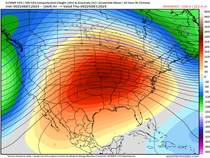WINTER AND THE STATE OF THE ENSO...
- terryswails1
- Aug 16, 2019
- 3 min read
With fall knocking on the door sea surface temperatures are becoming more and more important as indicators to the severity of the winter ahead. The water most focused on for impacts to the United States is the Pacific, especially the tropical Pacific which influences the phase the southern oscillation will be in during winter. You commonly know them as El Nino, La Nina, or the neutral phase La Nada.
The latest data from NOAA summarizes conditions this way. The key take away being that SST are warmer west, cooler east making for ENSO neutral conditions. Overall factors that could alter this balance are favored to remain weak enough to maintain neutral conditions (La Nada) through winter of 2020. The odds are 50-55 percent.

Here's the current sea surface temperatures. In the tropics you can see the warmer water (in orange) over the western and central Pacific and the cooler water (blue) over the eastern Pacific to South America

While not quite to the level necessary for El Nino classification, this type of SST in the tropical Pacific mirrors what's known as a weak Modoki El Nino, especially in the region known as 3.4 where the transition from warm to cool occurs. Region 3.4 is where we look to measure the ONI (Oceanic Nino Index)

The ONI is based on SST departures from average in the Niño 3.4 region. This is the main measure for monitoring, assessing, and predicting ENSO conditions that are defined as the three-month running-mean SST departures in the Niño 3.4 region. It is the one index that helps to place current events into a historical perspective
NOAA defines El Nino and La Nina this way using the ONI indeex

The most recent outlook based on the dynamical models predicts neutral ENSO conditions this winter. The red line below is the model average that falls below 0.5 to achieve the neutral status.

Why is it important to know which phase – El Niño, La Niña, or neutral – will take hold for the winter? Because atmospheric patterns supporting defined areas of warmth or cold air and determining the chances for stormier or drier weather are driven by each specific ENSO phase. Other signals can drive a winter pattern, think of high-latitude blocking in the form of the negative NAO, or a mass of very warn water in the north Pacific – but typically ENSO is a primary driver
So what does a neutral enso winter bring? What sticks out on the temperature map is the large expanse and impressive intensity of cold anomalies over Canada. A “finger of chill” points at the Midwest, Great Lakes and Northeast. Little warmth is apparent except for near Greenland (hinting at a propensity for blocking)

The average winter 500mb pattern looks similar to this. Note the ridge over the eastern Pacific driving cooler air into the central U.S. The steering flow rides south across Alaska and western Canada, but unlike the La Niña pattern, it does not weaken so much over the Northern U.S. Cold air from the Arctic source region typically carries farther south and east into the U.S.

Here's another perspective of the enso neutral winter pattern

ENSO’s impact on winter is more challenging to asses the closer it is to a neutral phase since it won’t be the only driving force on our local temperature and snowfall pattern. Despite additional variables, ENSO correlations with winter temperatures and snowfall show us certain patterns that might be helpful in creating a forecast. I still lean towards a winter that should have below normal temperatures and near to above normal snowfall if forecasts for La Nada hold true. Still some time to watch! Roll weather...TS













Comments